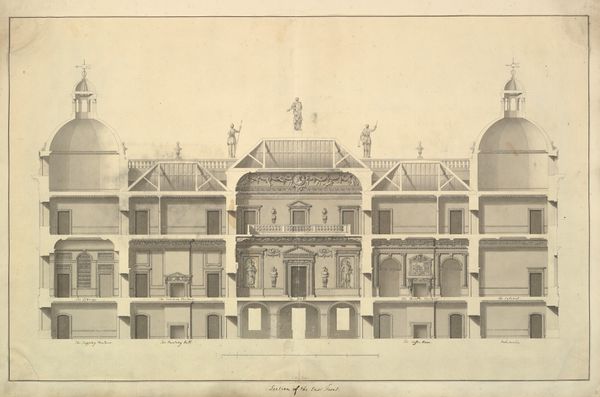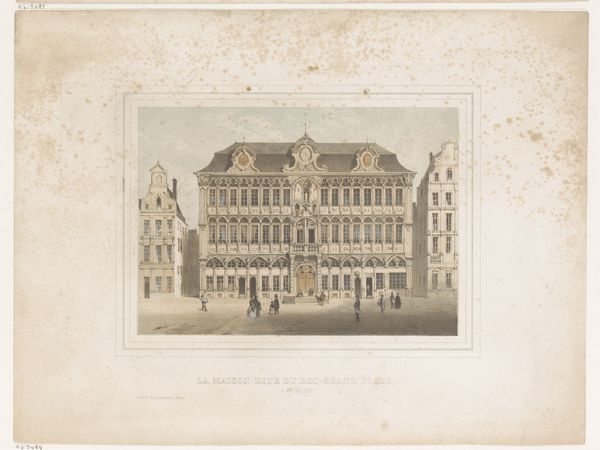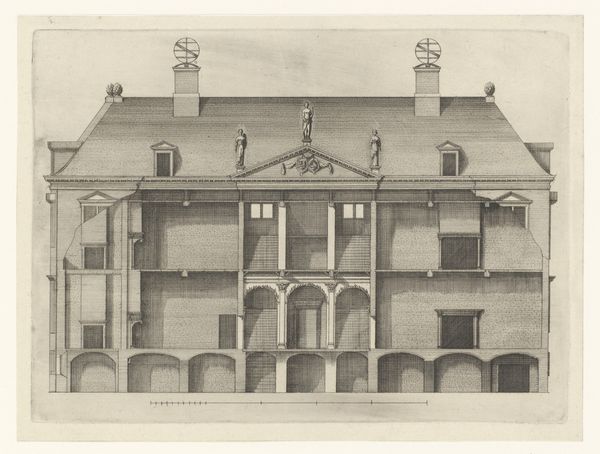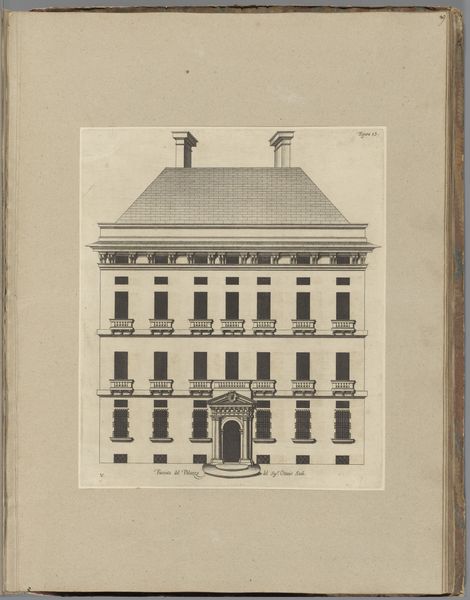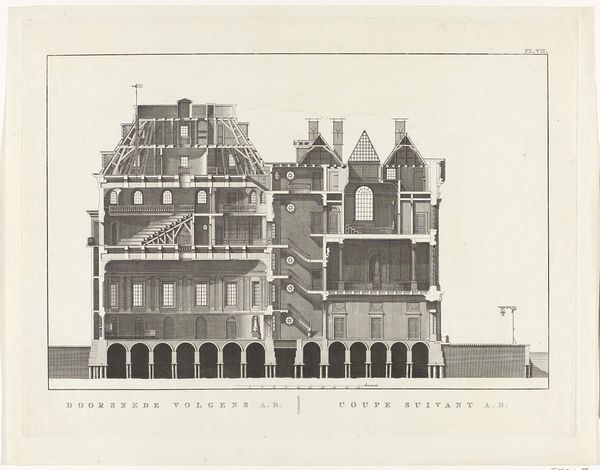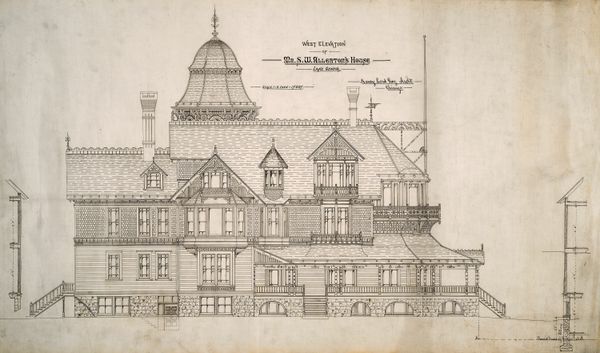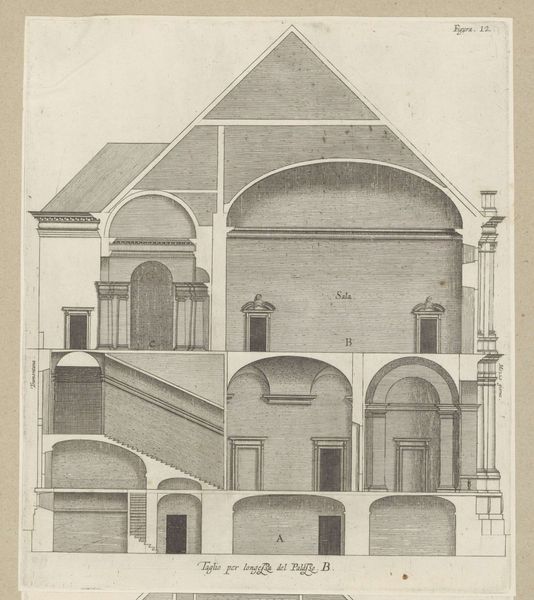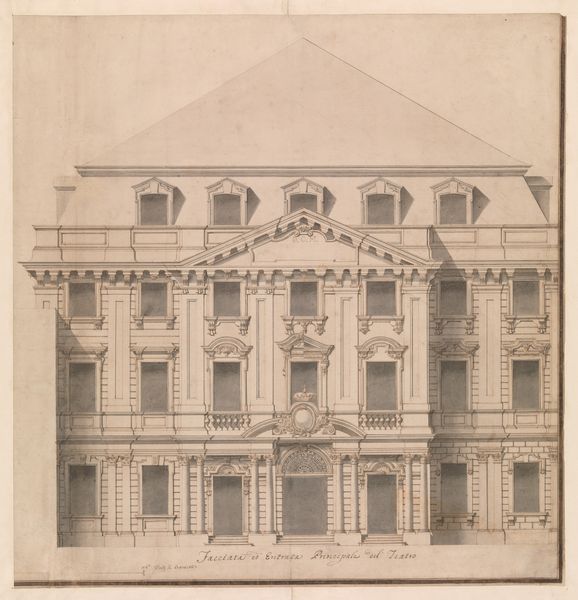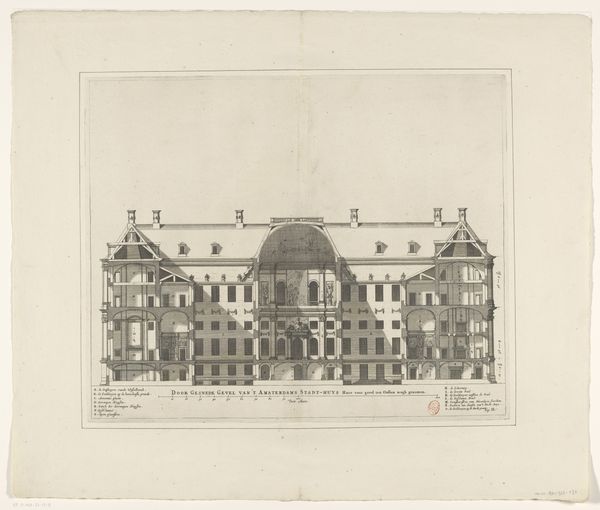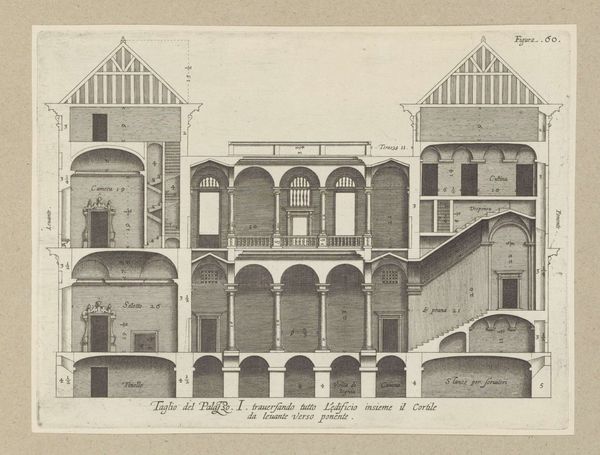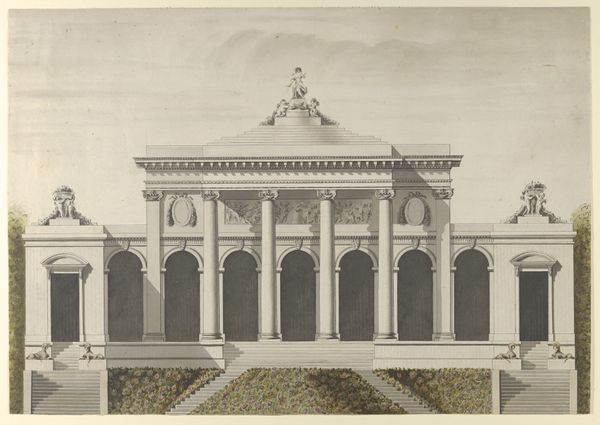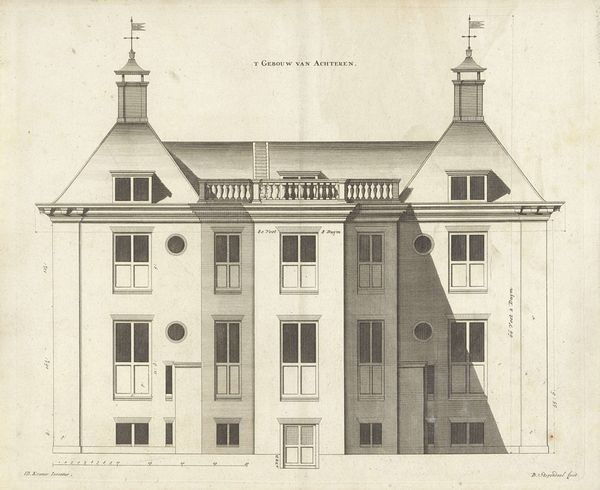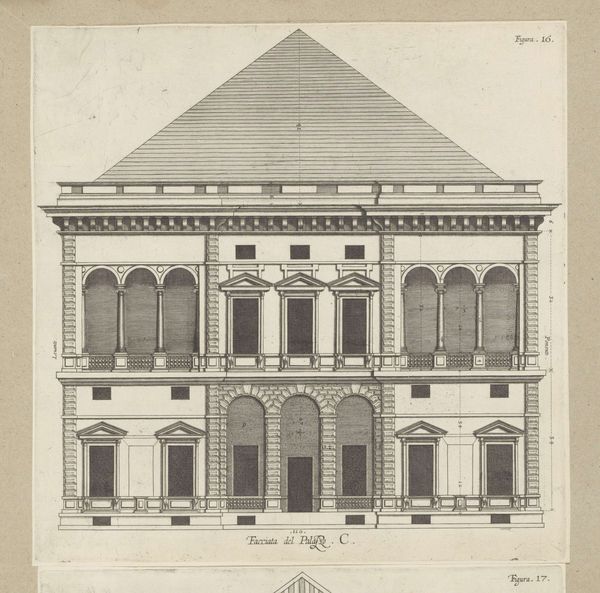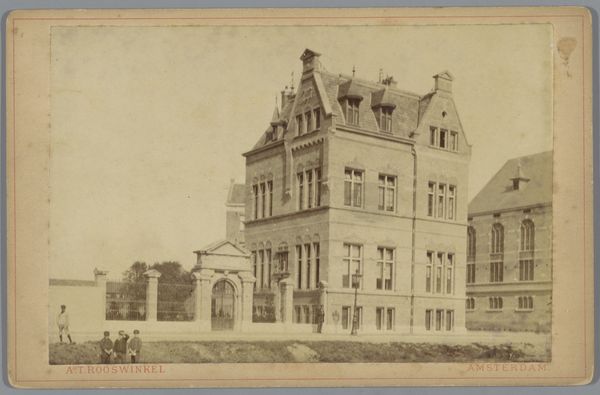
drawing, print, engraving, architecture
#
drawing
#
neoclassicism
# print
#
landscape
#
engraving
#
architecture
Dimensions: sheet: 17 1/2 x 25 3/8 in. (44.5 x 64.5 cm)
Copyright: Public Domain
Editor: This is Isaac Ware’s "Transverse Section, Houghton Hall, Norfolk" from 1735. It’s an engraving and print on paper, so technically a drawing, right? I find it quite intriguing to see a building presented like this, as a kind of cutaway. What's most striking is the symmetrical composition with domes on either side. How would you interpret this work from a formalist perspective? Curator: Indeed. Let's examine the underlying structural language at play here. Notice the interplay of the vertical and horizontal axes. Ware meticulously presents the facade. The linear precision delineates the architectural elements; observe how each room is compartmentalized. It underscores a classical rationality. Does the rendering technique affect your perception? Editor: I guess I see what you mean; it’s less about the overall impression of the building and more about the way the different elements fit together almost like pieces of a puzzle. Does that classical order represent something deeper, maybe in 18th century British society? Curator: Certainly, it reinforces established rules and power structures. But consider it formally, for a moment, if the structure had been deconstructed. Its meaning shifts immediately based on form alone, before our interpretations of its cultural implications. What elements define the core structure in your view? Editor: I’d say the regular arrangement of windows and doors, plus the echoing domes, give the building its rhythm. I still think that thinking about the patron of the building is useful, though! Curator: Agreed, but formalism encourages prioritizing the physical elements. The architecture represents, materially, order. What are your thoughts? Editor: This makes me think about the way the artist frames the elements to make them work. Curator: Precisely. This exercise enriches our understanding by foregrounding form as primary communicator. Editor: I think I have a deeper understanding of the artist’s decisions and emphasis on balance within the construction.
Comments
No comments
Be the first to comment and join the conversation on the ultimate creative platform.
